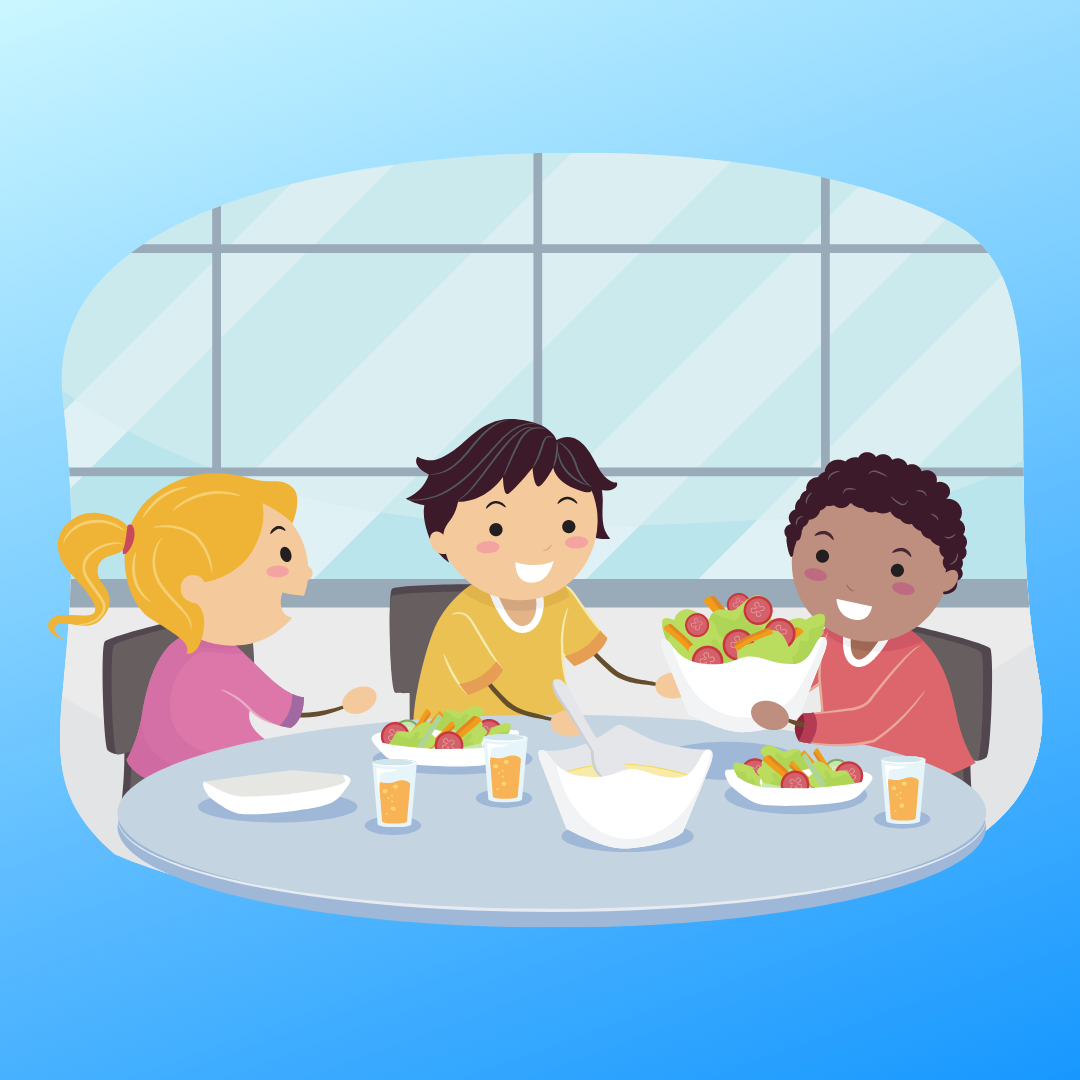Teacher Tips: Healthy Eating
If you are like most parents or educators out there, you have stressed a non-zero amount of times on feeding the children in your care.
Here at Common Ground we have gotten every question in the book, so we are going to try to give you some peace of mind:
How do I get my picky child to eat things? How do I get them to not hold out for sweets?
This is a tricky question, and one I have actually faced a lot at home. There is no one simple answer that works for everyone, but there are lots of ways you can get a child to eat outside of their comfort zone.
PLEASE NOTE! We are using “picky” as an umbrella term because it is the question we get asked so often. There are lots of reasons a child may be hesitant about food. Maybe it is a sensory discomfort! Maybe they had allergies in the past or have allergies now, and are just hesitant about trying NEW foods. Maybe there are plenty of foods they will eat, but they are not interested in a particular genre of food (vegetables, meats, etc.). MAYBE they are on a sweets kick and are on a hunger strike until they get what they want! Whatever the reason, there are things on their plate that you wish they would eat that they aren’t…
Be a Role Model: The best way to encourage a behavior is to EXHIBIT that behavior. Making sure everyone’s plate has pretty much the same thing is very effective. If you are drinking water instead of soda, if you are eating almonds for a snack and fresh fruit for dessert, you are helping to show that you really believe in what you are asking them to do, and are not just “making them eat” the healthy stuff.
Let them be involved in the process:
Planting fresh fruits and veggies in a local garden is an amazing option. We have seen kids try foods grown right here at Common Ground that they would never try at home. Don’t have time or space to have a garden? There are plenty of farms locally that offer “picking” days! You would be supporting local farms and providing your child an amazing, technology/screen-free activity that might encourage them to try a new food.
Cooking together in the kitchen and having them be “in charge” of a particular meal or dish gives them control and autonomy. Let them serve your plate too! Kids want control in their lives. Giving them a little bit helps them develop independence and confidence. Cooking has also been known to be an excellent activity for math and number sense!
Offer Limited Choices: Give the child choices for what they want, but eliminate the choices that you would rather they not pick! “Do you want broccoli or cauliflower?” over “Do you want broccoli for dinner?” This is especially important if you want to cut back on the sweets intake! Offer healthier options for snacks and desserts.
Is my kid eating enough?
Here is a guide to how much kids should be eating generally: Infant Guide, Child Guide, General Nutritional Guide
I was personally shocked at how little kids actually need to keep growing healthy and happy. Children have an incredible ability to self-regulate. They know their bodies, when they are hungry, what they need. Sometimes, in an effort to make sure they are getting enough food, we are actually over-feeding/force-feeding our children, which can cause this ability to self-regulate to disappear. As long as our children are hitting their markers and their doctor is happy with their progress, they are okay! Make sure to keep in regular contact and stay up to date on your doctor visits.
Is my kid eating too much?
Does your kid seem to want a lot of snacks in between meals? Do they seem to always want way more helpings than you expect? Fear not! Most of the time, kids are eating what they need to eat. During a growth spurt they tend to eat a ton! Kids who are especially active may also want extra snacks between meals. Here are some healthy tips to snacking:
Do not offer overly sugary food items for snacks. Kids will eat these even when they are not hungry! Same thing with sugary drinks. Water or milk are the liquids kids should be drinking during most meals. (Tip: Sometimes thirst masks itself as hunger! Make sure that water is always available)
The best “between meals” snacks are little healthy portions of foods that have a low glycemic index: fruits, nuts, cheese, veggies with hummus, nut butters on whole grain breads, etc. these have the good proteins and fats that kids need, and they will probably be less snacky overall. Chips, goldfish crackers, these kinds of snacks may not be sweet but they ACT like sweets. They have fewer healthy bonuses and their high glycemic index leads to the kids needing to eat MORE of them just to feel full.
When to check with your doctor:
Your child is literally eating until they throw up
Your child eats constantly and doesn’t seem to be gaining weight, has abnormal bowel movements, and/or seems fatigued
How do I know if they are getting enough protein/vitamins/fat/fiber?
Our first bit of advice is going to be: KEEP UP A GOOD DIALOGUE WITH YOUR PEDIATRICIAN. If they have any concerns they will help guide you through a nutritional plan. You can also reference our nutritional guides we linked above so that you have a general idea of what a kid’s day should look like.
The most important thing to note is to not make eating an anxiety-inducing affair for anyone involved. Everyone gets caught in negative feedback loops, and since you can’t just skip eating for a few days and start fresh, it can make every meal exhausting. The trick is to offer a plate of the foods you want them to eat, and then leave them to it. It can take kids 15-18 times of trying a new food before it becomes a “normal food” for them.
FED IS BEST. Offer the complete plate every time so that they have the right options, but keep in mind that you really just want them eating enough to keep them moving and happy. It will all balance out.

